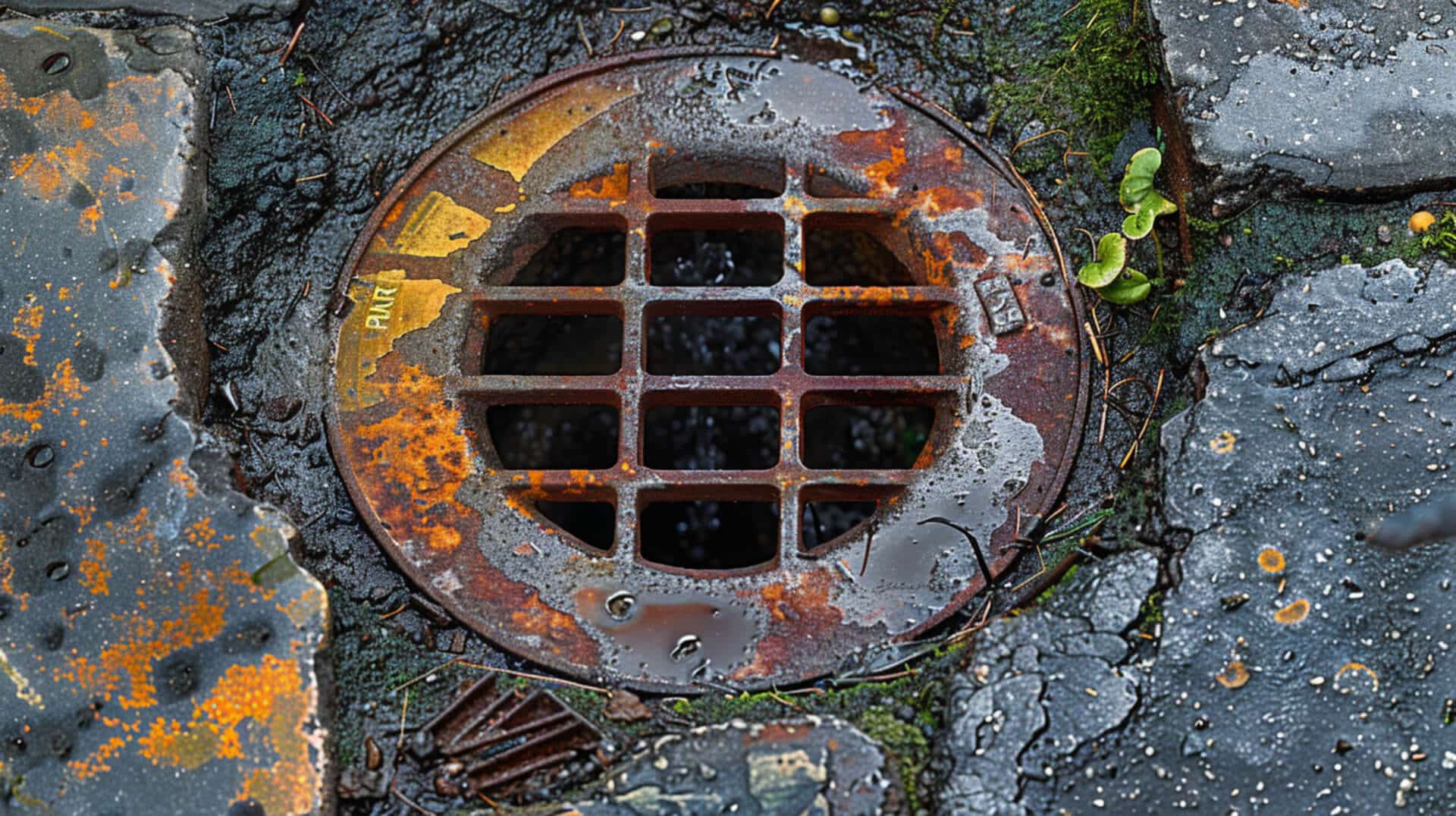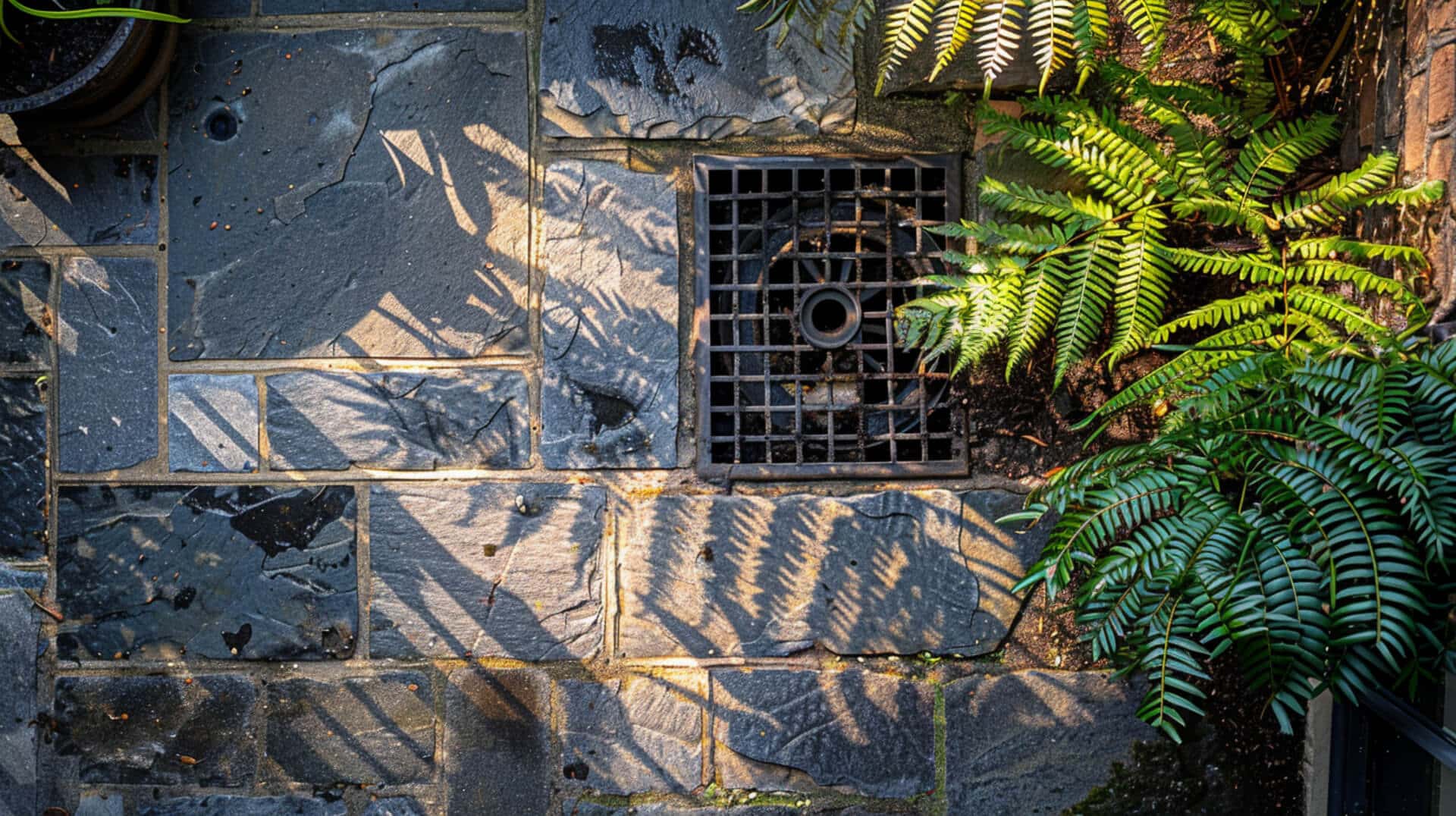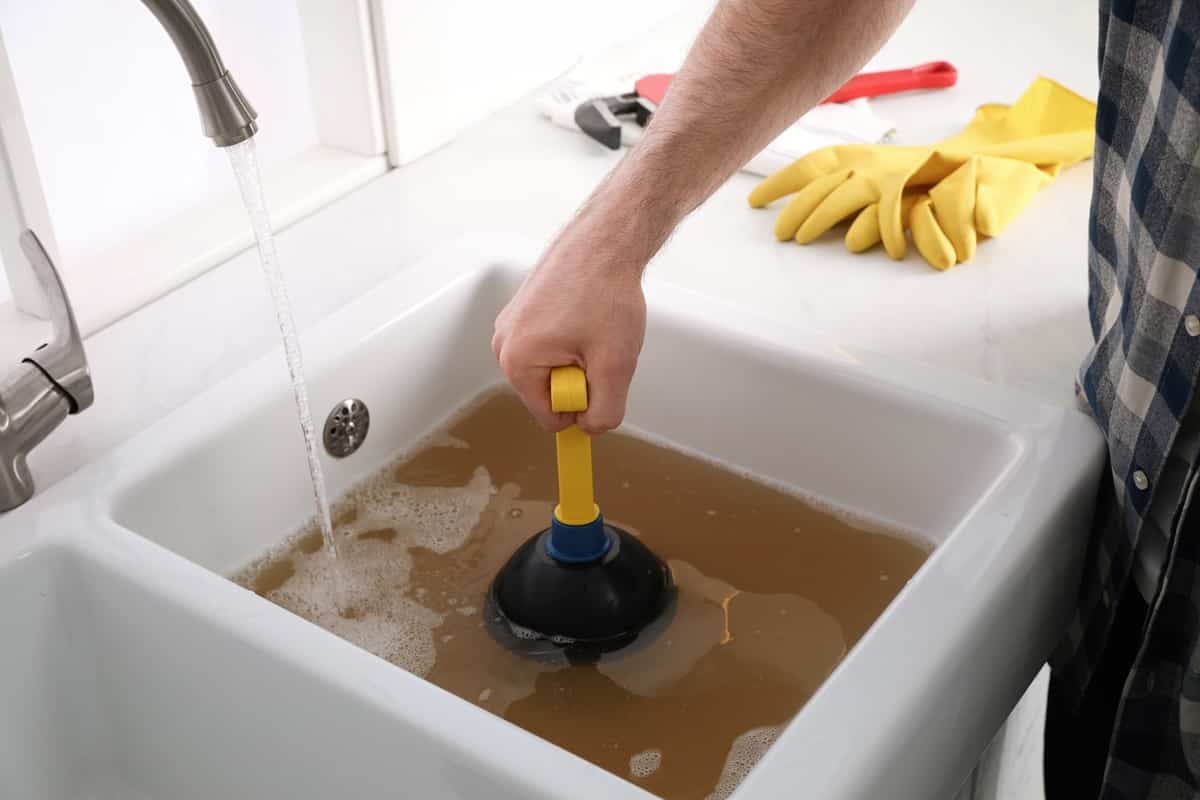 Avoiding Blocked Drains: The Problem with Cotton Swabs and Q-tips
Avoiding Blocked Drains: The Problem with Cotton Swabs and Q-tips
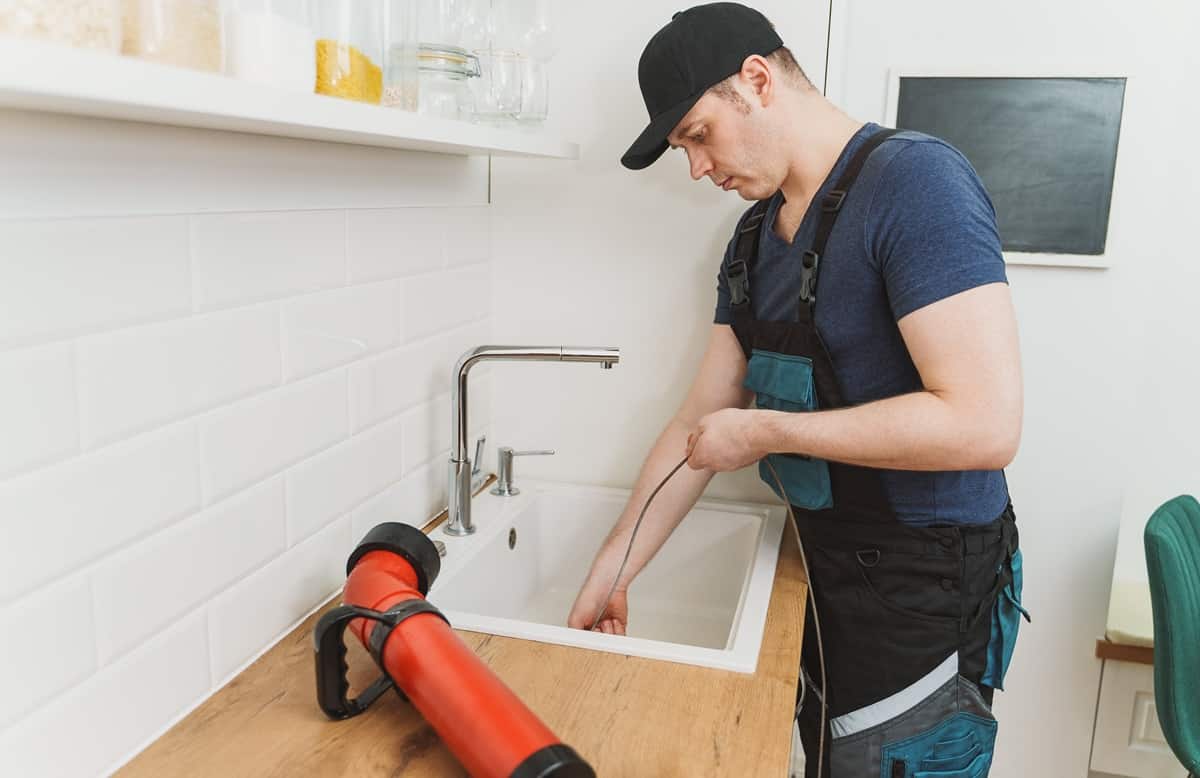
Common Causes of Blocked Drains – Cotton Swabs and Q-tips
Blocked drains are a common issue in both residential and commercial properties. Understanding the causes of these blockages is essential for effective prevention and maintenance. Among the various items that contribute to drain blockages, cotton swabs and Q-tips are particularly problematic due to their non-biodegradable nature.
Common Causes of Blocked Drains
Blocked drains can result from a variety of materials and substances. Some of the most common causes include:
- Grease and Fat: These substances solidify in pipes, forming blockages known as “fatbergs.
- Hair and Soap Suds: These combine to create dense clogs.
- Unflushables: Items such as baby wipes, sanitary products, and cotton buds do not break down easily and cause major plumbing issues.
- Food Waste: Items like pasta, rice, and vegetable peels accumulate in dishwashers and sinks.
- Broken Pipes: Poor installation or ageing can trap debris.
- Hard Water: Mineral deposits reduce water flow.
- Tree Roots: These can invade sewer lines through cracks.
- Leaves and Storm Debris: These block outdoor drains.
Importance of Addressing Blockages Caused by Cotton Swabs and Q-tips
Cotton swabs and Q-tips are often mistakenly flushed down toilets, leading to significant blockages. These items are non-biodegradable and can accumulate in pipes, causing severe clogs that are difficult to remove. Addressing these blockages promptly is crucial to prevent further damage to the plumbing system and avoid costly repairs.
Contribution of Cotton Swabs and Q-tips to Drain Blockages
Cotton swabs and Q-tips contribute to drain blockages in several ways:
- Non-Biodegradable Nature: These items do not break down in water, leading to persistent blockages.
- Accumulation: When flushed, they can accumulate with other debris, creating larger clogs.
- Misconceptions: Many people mistakenly believe these items are safe to flush, exacerbating the problem.
Guide Overview
This guide will cover the following topics in detail:
- Understanding the primary causes of drain blockages.
- The specific impact of cotton swabs and Q-tips on drains.
- Signs of blockages caused by these items.
- Immediate actions to take if a blockage is suspected.
- Preventive measures to avoid future blockages.
- The environmental impact of improper disposal.
- Educational efforts and public awareness.
- Professional solutions for addressing blockages.
- Cost and maintenance considerations.
- Advanced tools and technologies for drain cleaning.
By addressing these points, the guide aims to provide comprehensive information to help property owners, business owners, and facility managers effectively manage and prevent drain blockages caused by cotton swabs and Q-tips.
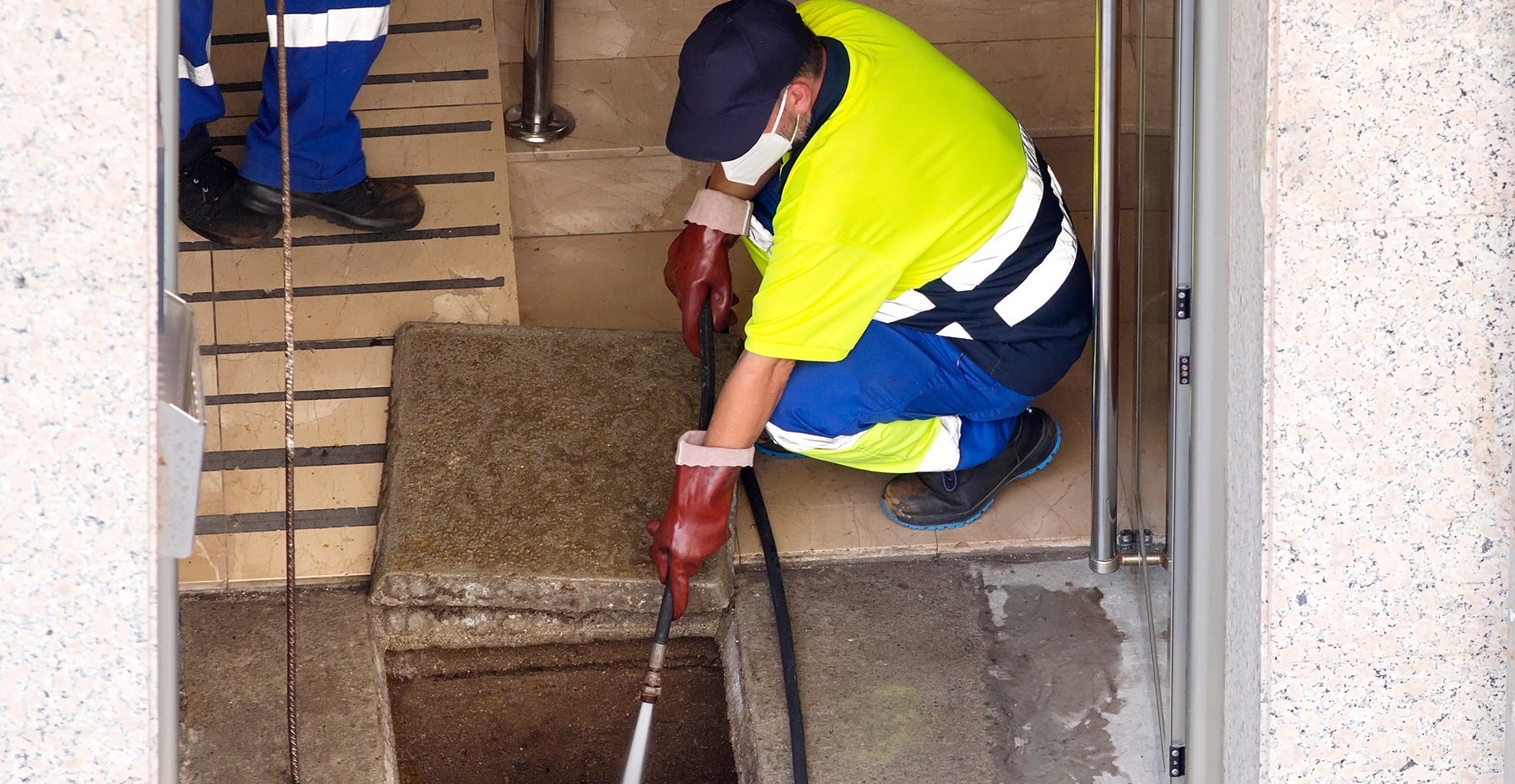
Understanding Drain Blockages
Blocked drains are a common issue in both residential and commercial properties. Understanding the primary causes and how different materials contribute to blockages is essential for effective prevention and management.
Primary Causes of Drain Blockages
Several factors can lead to blocked drains. These include:
- Grease and Fat: These substances solidify in pipes, forming blockages known as “fatbergs.
- Hair and Soap Suds: Hair combines with soap residue to create dense clogs.
- Unflushables: Items like baby wipes, sanitary products, and cotton swabs do not break down easily and cause significant plumbing issues.
- Food Waste: Food particles, especially pasta, rice, and vegetable peels, can accumulate in dishwashers and sinks.
- Broken Pipes: Poor installation or ageing pipes can trap debris, leading to blockages.
- Hard Water: Mineral deposits from hard water can reduce water flow.
- Tree Roots: Roots can invade sewer lines through cracks.
- Leaves and Storm Debris: Outdoor drains can be blocked by leaves and debris.
Contribution of Different Materials to Blockages
Different materials contribute to blockages in various ways:
- Grease and Fat: Solidify and adhere to pipe walls.
- Hair and Soap Suds: Form dense, tangled clogs.
- Unflushables: Items like cotton swabs and Q-tips are non-biodegradable and accumulate in pipes.
- Food Waste: Expands and traps other debris.
- Mineral Deposits: Build up over time, narrowing pipes.
Importance of Identifying the Cause
Identifying the specific cause of a blockage is crucial for effective resolution. Different causes require different solutions, and misidentifying the cause can lead to ineffective or even damaging interventions.
Common Signs of a Blocked Drain
Recognising the signs of a blocked drain can help address the issue promptly:
- Slow Draining Water: Indicates a partial blockage.
- Unpleasant Odours: Suggests trapped waste.
- Gurgling Sounds: Air trapped in the pipes.
- Water Backups: Severe blockages can cause water to back up into sinks, showers, or toilets.
Understanding these aspects of drain blockages can help in taking appropriate preventive and corrective measures.
Impact of Cotton Swabs and Q-tips on Drains
Blocked drains can cause significant inconvenience and damage. Understanding how specific items like cotton swabs and Q-tips contribute to these blockages is essential for effective prevention and management.
How Cotton Swabs and Q-tips Cause Blockages
Cotton swabs and Q-tips are common household items that often end up in drains. These items cause blockages due to their physical properties:
- Non-biodegradable Nature: Cotton swabs and Q-tips do not break down easily in water. Their plastic stems and cotton tips can accumulate in pipes, leading to clogs.
- Size and Shape: The small size and elongated shape of these items allow them to get lodged in narrow sections of pipes, creating obstructions.
Non-biodegradable Nature of Cotton Swabs and Q-tips
The materials used in cotton swabs and Q-tips contribute to their persistence in plumbing systems:
- Plastic Stems: The plastic stems are resistant to degradation, remaining intact for long periods.
- Cotton Tips: While cotton is biodegradable, the compact nature of the tips slows down the breakdown process, especially in the absence of sufficient water flow.
Misconceptions About Flushing Cotton Swabs and Q-tips
There are several misconceptions regarding the disposal of cotton swabs and Q-tips:
- Flushable Items: Many people mistakenly believe that these items are flushable. However, they are not designed to break down in water like toilet paper.
- Small Size: The small size of cotton swabs and Q-tips leads to the assumption that they will not cause significant blockages, which is incorrect.
Comparison to Other Common Blockages
Cotton swabs and Q-tips are just one of many items that can cause drain blockages. Compared to other common blockages:
- Grease and Fat: These substances solidify and adhere to pipe walls, creating large blockages.
- Hair and Soap Suds: Hair tangles with soap residue to form dense clogs.
- Unflushables: Items like baby wipes and sanitary products are also non-biodegradable and cause significant plumbing issues.
Understanding the impact of cotton swabs and Q-tips on drains highlights the importance of proper disposal practices to prevent blockages and maintain efficient plumbing systems.

Signs of Blockages Caused by Cotton Swabs and Q-tips
Blocked drains can cause significant inconvenience and potential damage. Recognising the early signs of blockages caused by cotton swabs and Q-tips is crucial for timely intervention and prevention of further issues.
Early Signs of a Blockage
Identifying the early signs of a blockage can help in addressing the issue before it escalates:
- Slow Draining Water: Water takes longer than usual to drain from sinks, showers, or bathtubs.
- Unpleasant Odours: Foul smells emanating from drains indicate trapped waste.
- Gurgling Sounds: Air trapped in the pipes can cause gurgling noises when water is draining.
- Water Backups: Water backing up into sinks, showers, or toilets is a clear sign of a blockage.
Identifying Blockages Caused by Cotton Swabs and Q-tips
Blockages caused by cotton swabs and Q-tips can be identified through specific indicators:
- Physical Inspection: Visible cotton swabs or Q-tips in the drain opening.
- Consistent Issues: Recurring blockages in the same drain may indicate the presence of non-biodegradable items like cotton swabs and Q-tips.
- Partial Blockages: Slow drainage and minor backups suggest partial blockages, often caused by small items like cotton swabs.
Potential Consequences of Ignoring These Signs
Ignoring the early signs of blockages can lead to more severe consequences:
- Complete Blockages: Partial blockages can develop into complete blockages, causing significant disruption.
- Water Damage: Persistent blockages can lead to water overflow, causing damage to property.
- Health Risks: Stagnant water and trapped waste can become breeding grounds for bacteria and other pathogens.
Differences from Other Types of Blockages
Blockages caused by cotton swabs and Q-tips have distinct characteristics compared to other types of blockages:
- Non-biodegradable Nature: Unlike organic blockages (e.g., food waste), cotton swabs and Q-tips do not break down over time.
- Physical Obstruction: These items create physical obstructions that are often more challenging to dislodge compared to grease or hair clogs.
Recognising these signs and understanding the specific impact of cotton swabs and Q-tips on drains can help in taking appropriate preventive and corrective measures.
Immediate Actions for Suspected Blockages
Blocked drains can cause significant inconvenience and potential damage. Taking immediate action when a blockage is suspected can prevent further complications.
What Should You Do if You Suspect a Blockage?
If you suspect a blockage in your drain, it is important to act promptly:
- Identify the Signs: Look for slow draining water, unpleasant odours, gurgling sounds, and water backups.
- Stop Using the Affected Drain: Avoid using the drain to prevent worsening the blockage.
How Can You Safely Attempt to Clear a Blockage Yourself?
There are several safe methods to attempt clearing a blockage yourself:
- Plunger: Use a plunger to create suction and dislodge the blockage.
- Drain Snake: A drain snake can reach deeper into the pipes to break up and remove the obstruction.
- Hot Water and Dish Soap: Pouring hot water mixed with dish soap can help dissolve grease and fat blockages.
When Should You Call a Professional?
Certain situations require professional intervention:
- Persistent Blockages: If the blockage does not clear after attempting DIY methods.
- Severe Blockages: When water backups or multiple drains are affected.
- Recurring Issues: Frequent blockages may indicate a more serious underlying problem.
What Tools and Methods Are Effective for Immediate Action?
Several tools and methods are effective for immediate action:
- Plunger: Effective for minor blockages.
- Drain Snake: Useful for deeper and more stubborn clogs.
- Chemical Drain Cleaners: Can be used cautiously to break down clogs, but may damage pipes if overused.
- Wet Vac: Effective for removing debris from outdoor drains.
Taking these immediate actions can help manage and resolve blockages caused by cotton swabs, Q-tips, and other common items, ensuring the smooth functioning of your drainage system.
Preventive Measures for Blockages
Preventing blockages caused by cotton swabs and Q-tips is essential for maintaining efficient drainage systems. Implementing proper disposal practices and regular maintenance can significantly reduce the risk of blockages.
How to Prevent Blockages Caused by Cotton Swabs and Q-tips
Preventing blockages involves understanding the impact of these items and taking proactive steps:
- Avoid Flushing: Do not flush cotton swabs and Q-tips down the toilet. These items are non-biodegradable and can cause significant blockages.
- Use Trash Bins: Dispose of cotton swabs and Q-tips in trash bins instead of flushing them.
Best Practices for Disposing of Cotton Swabs and Q-tips
Proper disposal practices are crucial for preventing blockages:
- Designated Disposal: Use designated trash bins for cotton swabs and Q-tips.
- Educate Household Members: Ensure that all household members are aware of the proper disposal methods for these items.
How Regular Maintenance Helps Prevent Blockages
Regular maintenance can help keep drains clear and prevent blockages:
- Routine Inspections: Schedule regular inspections to identify and address potential issues before they become severe.
- Cleaning Drains: Regularly clean drains to remove any buildup of debris.
Tools and Products for Prevention
Several tools and products can assist in preventing blockages:
- Drain Covers: Instal drain covers to catch hair and other debris before they enter the pipes.
- Hair Catchers: Use hair catchers in showers and sinks to prevent hair from causing clogs.
- Enzyme Cleaners: Use enzyme-based cleaners to break down organic matter in drains.
Implementing these preventive measures can help maintain efficient drainage systems and reduce the risk of blockages caused by cotton swabs, Q-tips, and other common items.
Environmental Impact of Improper Disposal
Improper disposal of cotton swabs and Q-tips can have significant environmental consequences. Understanding these impacts is crucial for promoting proper disposal practices and protecting environmental health.
Environmental Consequences of Flushing Cotton Swabs and Q-tips
Flushing cotton swabs and Q-tips down the toilet can lead to several environmental issues:
- Water Pollution: These items do not break down easily and can contribute to water pollution.
- Sewer Blockages: Accumulation in sewer systems can cause blockages, leading to overflows and contamination of natural water bodies.
Effects on Water Supply and Aquatic Life
Improper disposal of cotton swabs and Q-tips affects both the water supply and aquatic ecosystems:
- Contamination: Non-biodegradable materials can contaminate water sources, making water treatment more challenging.
- Harm to Aquatic Life: Ingested by marine animals, these items can cause injury or death. They also contribute to the growing problem of microplastics in oceans.
Importance of Proper Disposal for Environmental Health
Proper disposal of cotton swabs and Q-tips is essential for maintaining environmental health:
- Preventing Pollution: Disposing of these items in trash bins prevents them from entering water systems.
- Reducing Waste: Proper disposal reduces the burden on wastewater treatment facilities and helps maintain cleaner water bodies.
Long-term Impacts of Improper Disposal
The long-term impacts of improper disposal are far-reaching:
- Persistent Pollution: Non-biodegradable items remain in the environment for extended periods, contributing to long-term pollution.
- Ecosystem Disruption: Continuous pollution can disrupt ecosystems, affecting biodiversity and the health of aquatic habitats.
Understanding these environmental impacts underscores the importance of proper disposal practices for cotton swabs, Q-tips, and other non-biodegradable items.
Educational Efforts and Public Awareness
Educating tenants, employees, and family members about proper disposal practices is essential for preventing blockages caused by cotton swabs and Q-tips. Public awareness campaigns and resources can support these educational efforts.
Educating Tenants, Employees, and Family Members
Effective education involves clear communication and practical guidance:
- Informational Materials: Distribute brochures, posters, and flyers that explain the importance of proper disposal and the impact of flushing non-biodegradable items.
- Workshops and Training: Organise workshops and training sessions to demonstrate proper disposal methods and the consequences of improper disposal.
- Signage: Place signs near sinks and toilets reminding individuals not to flush cotton swabs, Q-tips, and other non-biodegradable items.
Public Awareness Campaigns
Several public awareness campaigns focus on promoting proper disposal practices:
- “Think Before You Flush”: This campaign educates the public about the environmental impact of flushing non-biodegradable items and encourages proper disposal.
- Local Government Initiatives: Many local governments run campaigns to raise awareness about the importance of proper waste disposal and its impact on the environment.
Promoting Proper Disposal Practices
Businesses and property managers can play a significant role in promoting proper disposal practices:
- Employee Education Programmes: Implement programmes to educate employees about the importance of proper disposal and provide guidelines for workplace practices.
- Tenant Communication: Send regular reminders to tenants about proper disposal methods and the consequences of improper disposal.
- Facility Management: Ensure that adequate disposal facilities, such as trash bins, are available and easily accessible.
Resources for Education and Awareness
Various resources are available to support education and awareness efforts:
- Educational Websites: Websites like the Environmental Protection Agency (EPA) provide information and resources on proper waste disposal.
- Community Programmes: Local community programmes often offer workshops and materials to educate the public about proper disposal practices.
- Environmental Organisations: Organisations such as the Ocean Conservancy provide resources and support for public awareness campaigns.
By leveraging these educational efforts and public awareness resources, property owners, business owners, and facility managers can effectively promote proper disposal practices and prevent blockages caused by cotton swabs and Q-tips.
Professional Solutions for Blockages
Blocked drains can be a significant issue, requiring professional intervention to ensure effective resolution. Various professional services are available to address blockages caused by cotton swabs, Q-tips, and other common items.
Available Professional Services
Several professional services can help clear blocked drains:
- CCTV Drain Inspection: This service uses cameras to inspect the inside of pipes, identifying the exact location and cause of blockages.
- High-Pressure Drain Jetting: This method uses high-pressure water jets to break up and remove stubborn blockages.
- Descaling Services: These services remove mineral deposits from pipes, improving water flow and preventing future blockages.
- Root-Cutting Equipment: Specialised equipment is used to cut and remove tree roots that have invaded sewer lines.
How CCTV Drain Inspections Help Identify Blockages
CCTV drain inspections are a valuable tool for diagnosing blockages:
- Visual Inspection: Cameras provide a clear view of the inside of pipes, allowing professionals to identify blockages and their causes.
- Accurate Diagnosis: This method helps pinpoint the exact location of the blockage, facilitating targeted and efficient intervention.
Role of High-Pressure Drain Jetting in Clearing Blockages
High-pressure drain jetting is an effective method for clearing blockages:
- Powerful Cleaning: High-pressure water jets can break up and flush away grease, fat, and other tough blockages.
- Thorough Removal: This method ensures that blockages are completely removed, preventing recurrence.
How Descaling Services and Root-Cutting Equipment Assist
Descaling services and root-cutting equipment play crucial roles in maintaining clear drains:
- Descaling Services: These services remove mineral deposits from hard water, improving water flow and reducing the risk of blockages.
- Root-Cutting Equipment: Specialised tools cut and remove tree roots that have infiltrated sewer lines, preventing further damage and blockages.
By utilising these professional solutions, property owners, business owners, and facility managers can effectively address and prevent blockages, ensuring the smooth operation of their drainage systems.
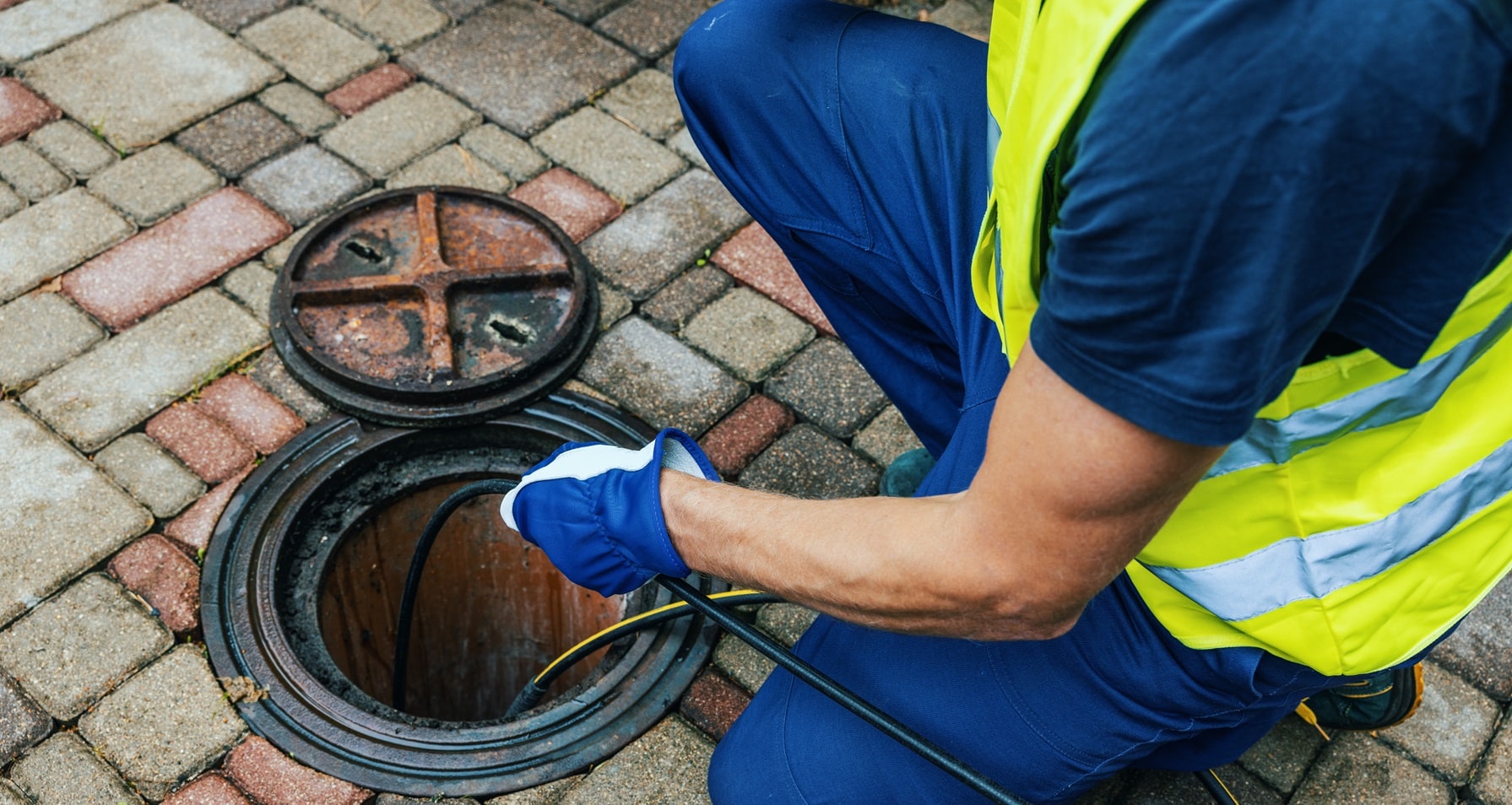
Cost and Maintenance Considerations
Understanding the costs and maintenance considerations associated with professional drain cleaning services is essential for property owners, business owners, and facility managers. Proper budgeting and regular maintenance can prevent costly repairs and ensure efficient drainage systems.
Costs Associated with Professional Drain Cleaning Services
Professional drain cleaning services can vary in cost depending on the severity of the blockage and the methods used:
- CCTV Drain Inspection: Typically ranges from $100 to $300, depending on the complexity and length of the inspection.
- High-Pressure Drain Jetting: Costs can range from $200 to $500, depending on the extent of the blockage and the length of the pipes.
- Descaling Services: Generally cost between $150 and $400, depending on the level of mineral buildup.
- Root-Cutting Equipment: Costs can vary widely, often ranging from $300 to $600, depending on the severity of root intrusion.
How Regular Maintenance Saves Money in the Long Run
Regular maintenance can lead to significant cost savings over time:
- Preventing Major Blockages: Routine inspections and cleaning can prevent severe blockages that require expensive emergency services.
- Extending Pipe Lifespan: Regular descaling and cleaning can extend the lifespan of pipes, reducing the need for costly replacements.
- Avoiding Water Damage: Preventing blockages reduces the risk of water damage, which can be expensive to repair.
Cost Implications of Ignoring Blockages
Ignoring blockages can lead to increased costs and complications:
- Emergency Services: Severe blockages often require emergency services, which are more expensive than regular maintenance.
- Property Damage: Water backups and overflows can cause significant property damage, leading to costly repairs.
- Health Risks: Blocked drains can lead to health hazards, potentially resulting in additional costs for remediation and healthcare.
Budgeting for Maintenance and Repairs
Effective budgeting for maintenance and repairs involves planning and allocating resources:
- Regular Inspections: Schedule regular inspections to identify and address potential issues early.
- Maintenance Plans: Consider maintenance plans offered by professional services, which can provide cost-effective solutions for ongoing care.
- Emergency Fund: Allocate a portion of the budget for unexpected repairs and emergencies to ensure prompt resolution without financial strain.
By understanding these cost and maintenance considerations, property owners, business owners, and facility managers can effectively manage their drainage systems and prevent costly issues.
Advanced Tools and Technologies
Advanced tools and technologies play a crucial role in modern drain cleaning, offering efficient and effective solutions for various types of blockages. Understanding these tools can help property owners, business owners, and facility managers make informed decisions about maintaining their drainage systems.
Available Advanced Tools for Drain Cleaning
Several advanced tools are available for drain cleaning, each designed to address specific types of blockages:
- Hydro-Jetting: Uses high-pressure water jets to clear blockages and clean pipe walls.
- CCTV Drain Inspection: Employs cameras to visually inspect the inside of pipes, identifying blockages and structural issues.
- Root-Cutting Equipment: Specialised tools for cutting and removing tree roots that have infiltrated sewer lines.
- Descaling Tools: Remove mineral deposits from pipes, improving water flow and preventing future blockages.
How Hydro-Jetting and CCTV Inspections Work
Hydro-jetting and CCTV inspections are two of the most effective methods for diagnosing and clearing blockages:
Hydro-Jetting
- High-Pressure Water Jets: Hydro-jetting uses high-pressure water jets to break up and flush away blockages, including grease, fat, and other tough obstructions.
- Thorough Cleaning: This method not only removes blockages but also cleans the pipe walls, preventing future buildup.
CCTV Drain Inspection
- Visual Inspection: CCTV drain inspections involve inserting a camera into the pipes to provide a clear view of the interior, identifying blockages, cracks, and other issues.
- Accurate Diagnosis: This method allows for precise identification of the blockage’s location and cause, facilitating targeted intervention.
Emerging Innovative Technologies in Drain Maintenance
Innovative technologies continue to emerge in the field of drain maintenance, offering new solutions for efficient blockage removal:
- Robotic Drain Cleaners: Robots equipped with cameras and cutting tools can navigate pipes and remove blockages.
- Smart Sensors: Sensors placed in pipes can monitor flow and detect early signs of blockages, alerting maintenance teams before issues escalate.
- Biodegradable Enzyme Cleaners: Environmentally friendly cleaners that use enzymes to break down organic matter in pipes.
Improving Efficiency of Blockage Removal
These advanced tools and technologies improve the efficiency of blockage removal in several ways:
- Precision: Accurate identification and targeted removal of blockages reduce the need for repeated interventions.
- Speed: High-pressure jets and robotic cleaners can quickly clear blockages, minimising downtime.
- Preventive Maintenance: Smart sensors and regular inspections help prevent blockages from forming, ensuring the smooth operation of drainage systems.
By leveraging these advanced tools and technologies, property owners, business owners, and facility managers can maintain efficient and reliable drainage systems.
Conclusion: Final Thoughts on Preventing and Addressing Blockages
Blocked drains can cause significant inconvenience and potential damage. Implementing effective practices and maintaining awareness are crucial for preventing and addressing blockages caused by cotton swabs, Q-tips, and other common items.
Key Takeaways from This Guide
Understanding the primary causes of blocked drains and the specific impact of cotton swabs and Q-tips is essential. Key points include:
- Non-biodegradable Nature: Cotton swabs and Q-tips do not break down easily and can cause significant blockages.
- Proper Disposal: Avoid flushing these items and use trash bins for disposal.
- Preventive Measures: Regular maintenance and the use of drain covers can prevent blockages.
Implementing Practices for Property Owners, Business Owners, and Facility Managers
Effective implementation of preventive measures involves:
- Routine Inspections: Schedule regular inspections to identify potential issues early.
- Educational Efforts: Educate tenants, employees, and family members about proper disposal practices.
- Professional Services: Utilise professional services for severe or persistent blockages.
Importance of Ongoing Education and Awareness
Continuous education and awareness are vital for maintaining efficient drainage systems:
- Public Awareness Campaigns: Participate in or promote campaigns that highlight the importance of proper disposal.
- Regular Updates: Keep informed about new technologies and best practices in drain maintenance.
Steps to Ensure Long-term Drain Health
Ensuring long-term drain health requires a combination of preventive measures and regular maintenance:
- Proper Disposal Practices: Consistently dispose of non-biodegradable items in trash bins.
- Use of Advanced Tools: Leverage advanced tools and technologies for effective blockage removal.
- Scheduled Maintenance: Implement a maintenance schedule to prevent blockages and extend the lifespan of pipes.
By following these guidelines, property owners, business owners, and facility managers can effectively prevent and address blockages, ensuring the smooth operation of their drainage systems.
